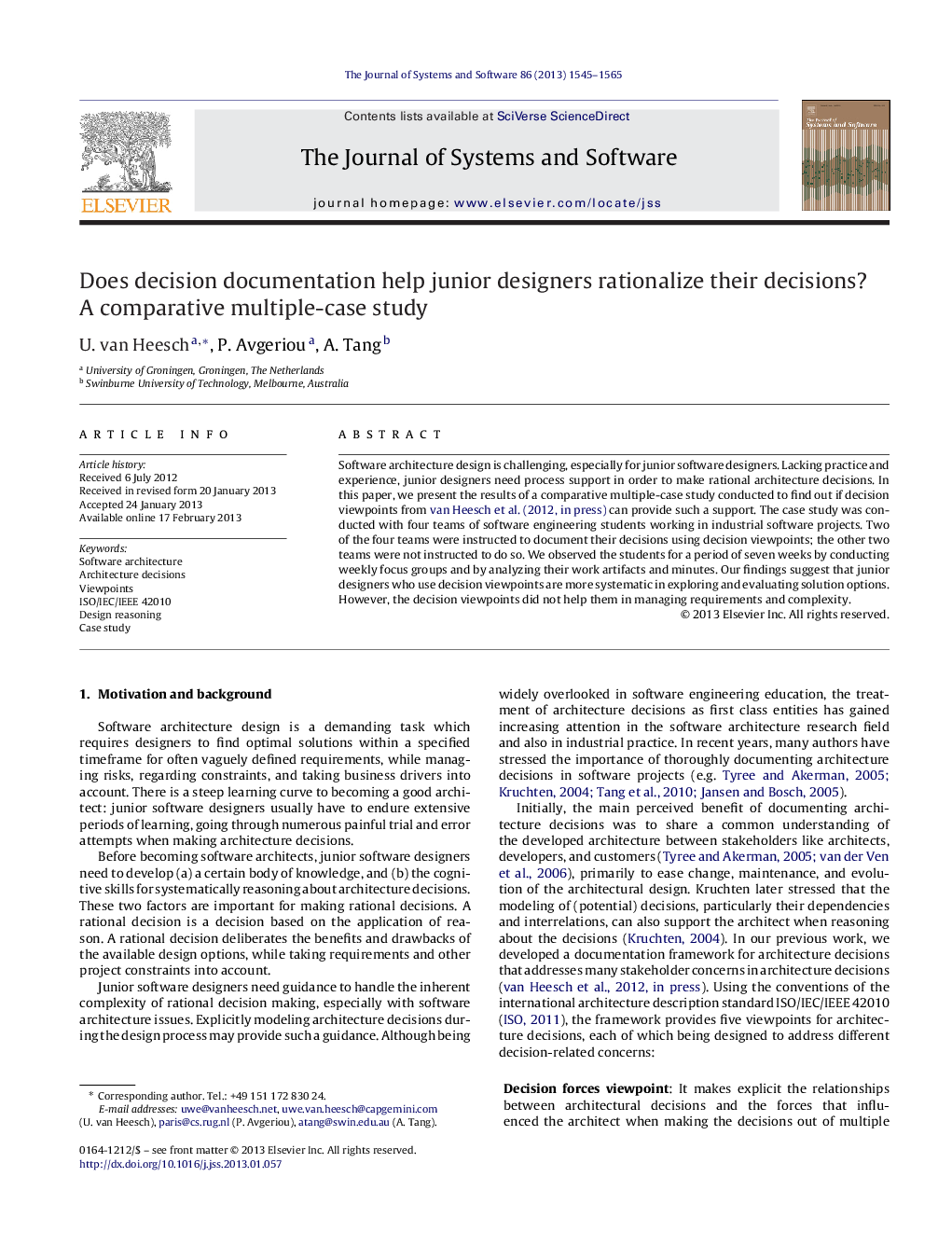| Article ID | Journal | Published Year | Pages | File Type |
|---|---|---|---|---|
| 458446 | Journal of Systems and Software | 2013 | 21 Pages |
Software architecture design is challenging, especially for junior software designers. Lacking practice and experience, junior designers need process support in order to make rational architecture decisions. In this paper, we present the results of a comparative multiple-case study conducted to find out if decision viewpoints from van Heesch et al., 2012 and van Heesch et al., in press can provide such a support. The case study was conducted with four teams of software engineering students working in industrial software projects. Two of the four teams were instructed to document their decisions using decision viewpoints; the other two teams were not instructed to do so. We observed the students for a period of seven weeks by conducting weekly focus groups and by analyzing their work artifacts and minutes. Our findings suggest that junior designers who use decision viewpoints are more systematic in exploring and evaluating solution options. However, the decision viewpoints did not help them in managing requirements and complexity.
► We observed four software development teams for a period of seven weeks. ► Two of the teams modeled their architecture decisions during the design process using decision viewpoints. ► We conducted weekly focus groups and analyzed all work artifacts produced. ► The teams who used decision viewpoints were more systematic in exploring and evaluating solution options. ► We conclude that using decision viewpoints during the design supports junior designers in making more rational decisions.
